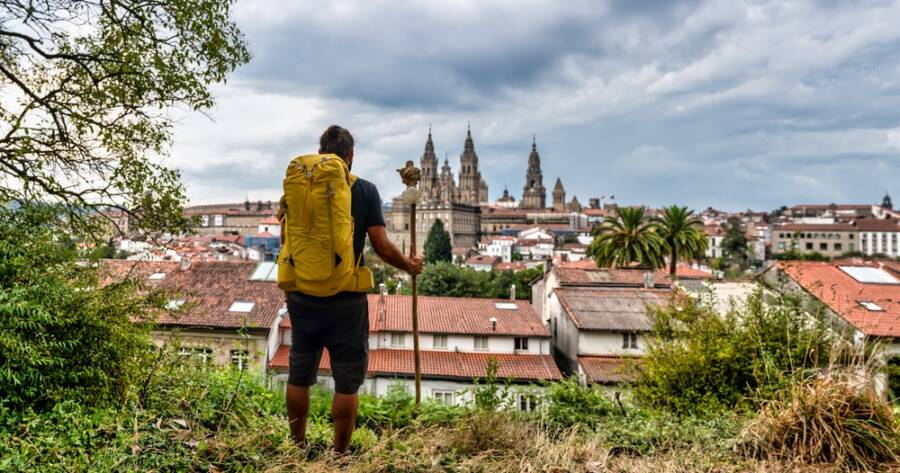The Camino de Santiago, or Way of St. James, is one of the most famous pilgrimage routes in the world. This ancient trail, leading to the cathedral in Santiago de Compostela, Spain, has drawn travelers for over a thousand years. Whether for spiritual reasons or the pursuit of personal growth, the Camino offers more than just a journey across land—it’s an opportunity to reflect and challenge yourself.
The Historic Roots of the Camino de Santiago
The Camino de Santiago dates back to the 9th century, when the tomb of Saint James the Apostle was said to have been discovered in Santiago de Compostela. The route quickly became one of the most important Christian pilgrimages, attracting people from all walks of life. For centuries, pilgrims walked the Camino for religious purposes, seeking forgiveness, healing, or spiritual enlightenment.
Today, the Camino continues to be a major spiritual destination, but it also attracts adventurers, hikers, and travelers looking for a meaningful experience. While there are several routes to Santiago de Compostela, the most popular is the Camino Francés, which begins in the French Pyrenees and stretches over 500 miles.
A Journey Through Diverse Landscapes
Walking the Camino de Santiago offers a unique opportunity to experience Spain’s diverse landscapes. Pilgrims traverse a variety of terrain, from the lush forests of Galicia to the golden plains of Castile and León. Along the way, you’ll encounter picturesque villages, historical landmarks, and expansive vineyards.
Each region of Spain offers its own character and charm. The northern portion of the Camino, for example, is often shaded by thick forests, providing a peaceful environment for quiet reflection. The central stretches of the route are marked by expansive wheat fields and charming medieval towns. The final stretch, as pilgrims approach Santiago, brings them through rolling hills and green valleys.
For many walkers, the landscapes serve as a metaphor for their own internal journey. The changing terrain reflects the personal transformation that often takes place during the pilgrimage. Whether it’s a physical challenge or a deeper spiritual awakening, the Camino provides a setting where each step holds meaning.
The Camino as a Pilgrimage and Personal Challenge
Although the Camino de Santiago remains a religious pilgrimage, many modern-day travelers walk the route for personal reasons, seeking everything from physical challenge to self-discovery. The route is demanding, but it’s designed to be accessible to anyone in good health. Each stage of the journey is typically between 12 and 20 miles, and pilgrims are encouraged to walk at their own pace.
For many, the Camino offers an opportunity for introspection. Away from the distractions of everyday life, pilgrims have time to think, reflect, and connect with themselves. The physical exertion of walking also provides a sense of accomplishment, and with each passing day, walkers often experience a growing sense of connection with others and with the world around them.
While some walk the Camino for spiritual reasons, others may use it as a form of meditation or as an opportunity to disconnect from modern life. The shared experience of walking with fellow pilgrims, many of whom are from different parts of the world, fosters a sense of community that transcends cultural and language barriers.
Meeting Fellow Pilgrims Along the Way
One of the most rewarding aspects of the Camino de Santiago is the opportunity to meet people from all over the world. Pilgrims often stay in albergues (hostels) along the route, where they can rest, share meals, and bond with others who are walking the same journey.
The Camino’s sense of community is a big part of its appeal. Regardless of their background, pilgrims often find themselves forging deep connections with one another. It’s common to hear stories of strangers coming together for a shared experience, supporting each other through moments of physical or emotional difficulty.
Walking the Camino is a reminder that despite our differences, we all share common experiences and aspirations. Many walkers form lasting friendships, and some even return to the Camino years later to reconnect with those they met along the way.
The Spiritual Significance and the Reward of Reaching Santiago
For those who walk the Camino for spiritual or religious reasons, reaching the cathedral in Santiago de Compostela is the ultimate reward. According to tradition, pilgrims who complete the journey are granted a plenary indulgence, which is said to absolve them of their sins. The cathedral houses the tomb of Saint James, and many pilgrims choose to attend a mass upon arrival to give thanks for their journey.
Even for those who don’t walk for religious reasons, arriving in Santiago is a moment of great significance. Completing the Camino is seen as an achievement, a culmination of the physical and mental effort put into the journey. The sense of accomplishment that comes with reaching the end of the trail is often accompanied by a deep sense of peace, fulfillment, and clarity.
The Camino isn’t just about reaching the destination—it’s about the journey itself. The challenges, the moments of solitude, and the encounters with fellow pilgrims make the Camino de Santiago a life-changing experience for many.
A Journey of Transformation
The Camino de Santiago is more than just a pilgrimage or a hiking trail; it’s a journey of personal transformation. Whether seeking spiritual growth, physical challenge, or an opportunity to disconnect from the world, pilgrims walk the Camino for many different reasons.

